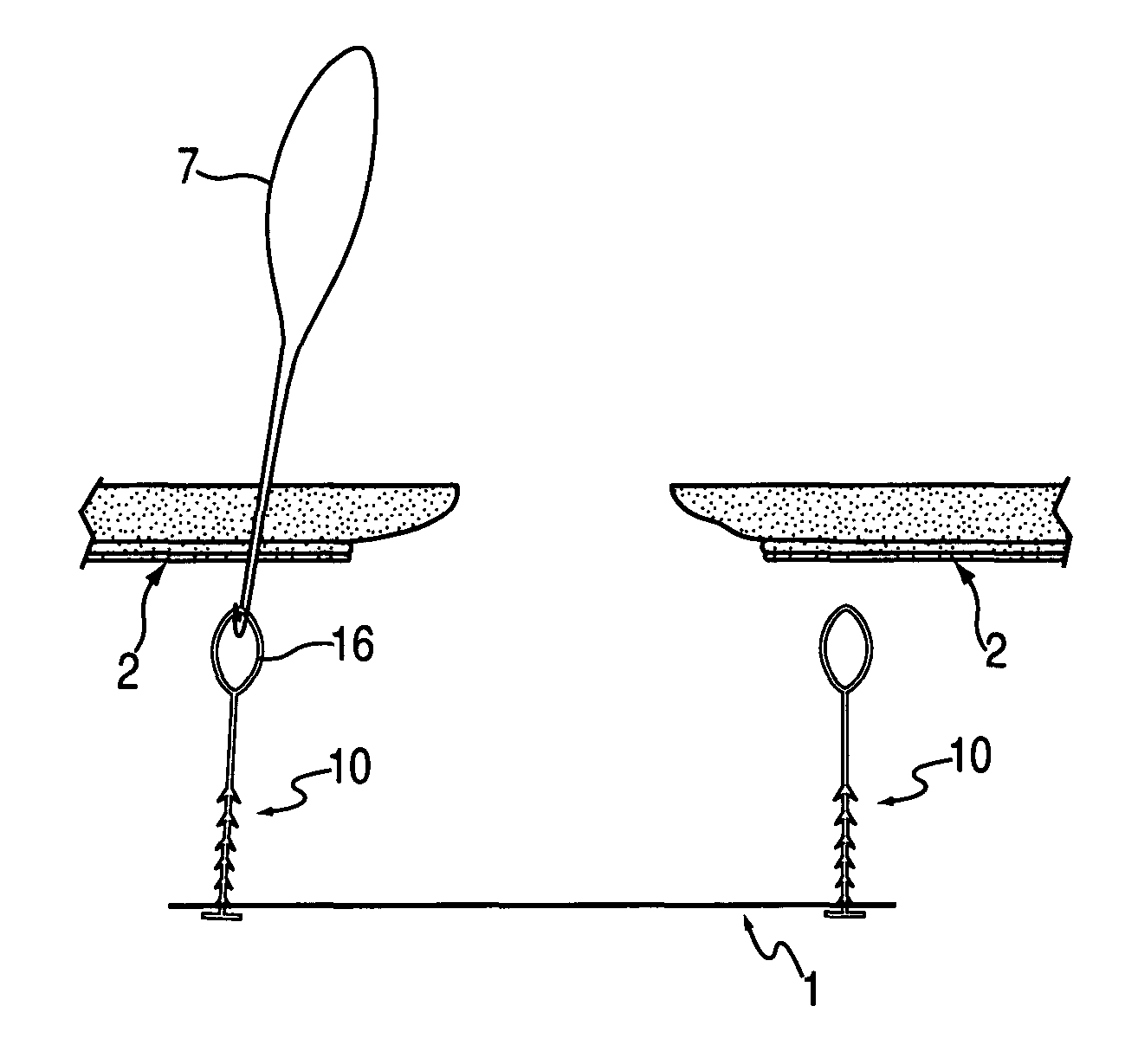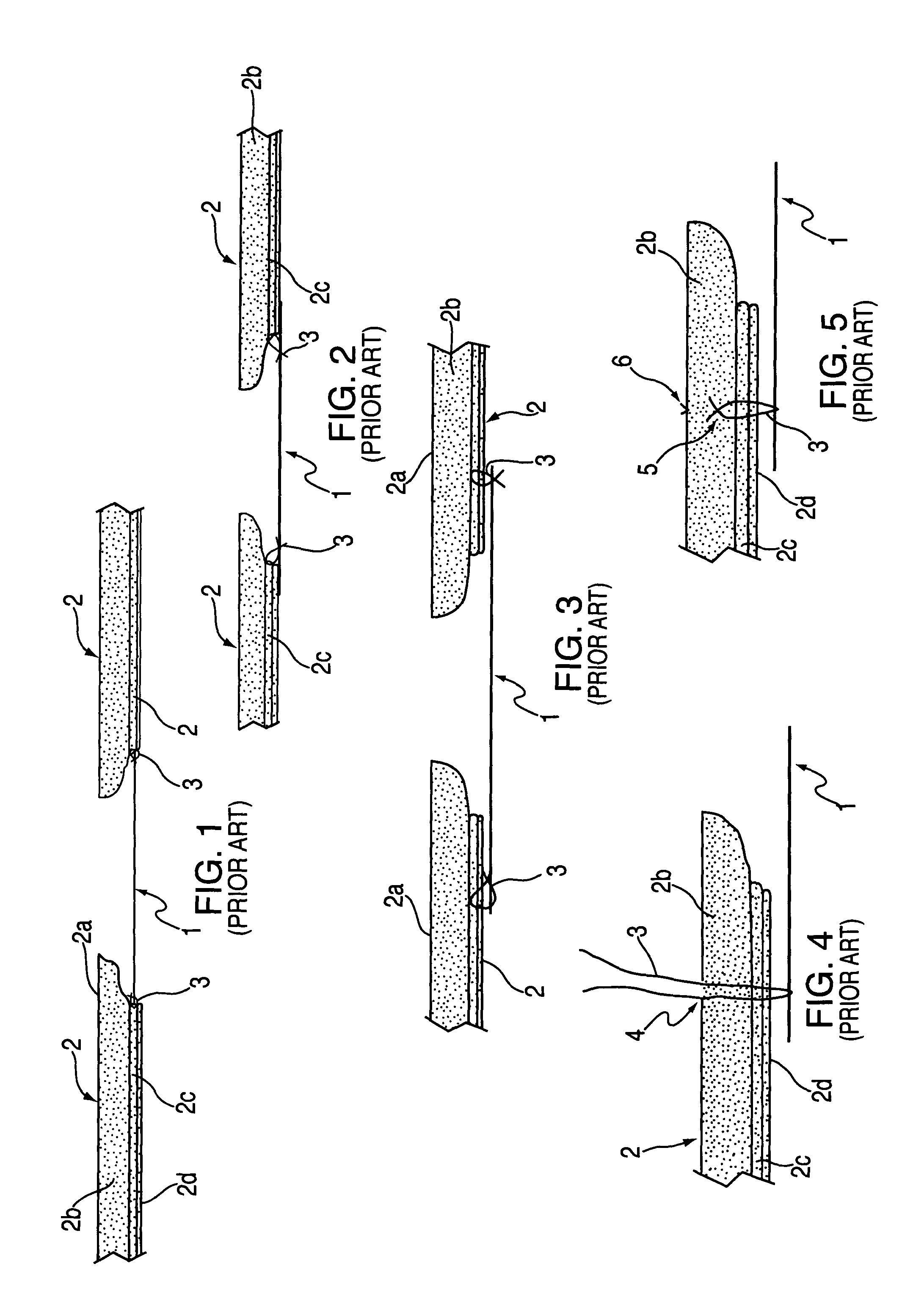Device and method for tacking a prosthetic screen
a prosthetic screen and device technology, applied in the field of devices and methods for tacking prosthetic screens, can solve the problems of high failure rate of repair, visible bulge, infection and death if not surgically repaired, etc., and achieve the effect of not producing as much postoperative pain, excellent handling, and easy grasping
- Summary
- Abstract
- Description
- Claims
- Application Information
AI Technical Summary
Benefits of technology
Problems solved by technology
Method used
Image
Examples
Embodiment Construction
[0039]Turning now to FIG. 6, a prosthetic screen tacking device 10 includes a filament 12 with a perpendicular foot 14 at one end and a loop 16 at the other end. A plurality of barbs 18 are provided adjacent to the foot 14. The foot 14 may be a linear form, so that end of the device forms a T or may have other configurations as described in more detail below with reference to FIGS. 13–15. The barbs 18 are angulated in such a manner that they permit movement of the device through tissue in one direction (toward the loop 16), but prevent movement in the opposite direction (toward the foot 14).
[0040]FIGS. 7–10 illustrate how the tacking device 10 is used in the open method of hernia repair. Several devices 10 are pulled through the prosthetic screen 1 equidistantly along the periphery (circumference) of the prosthesis 1. The assembly is then positioned within the open peritoneal cavity, over the viscera (FIG. 7). A suture passer 7 (e.g. a Reverdin needle) is then used to penetrate the ...
PUM
 Login to View More
Login to View More Abstract
Description
Claims
Application Information
 Login to View More
Login to View More - R&D
- Intellectual Property
- Life Sciences
- Materials
- Tech Scout
- Unparalleled Data Quality
- Higher Quality Content
- 60% Fewer Hallucinations
Browse by: Latest US Patents, China's latest patents, Technical Efficacy Thesaurus, Application Domain, Technology Topic, Popular Technical Reports.
© 2025 PatSnap. All rights reserved.Legal|Privacy policy|Modern Slavery Act Transparency Statement|Sitemap|About US| Contact US: help@patsnap.com



